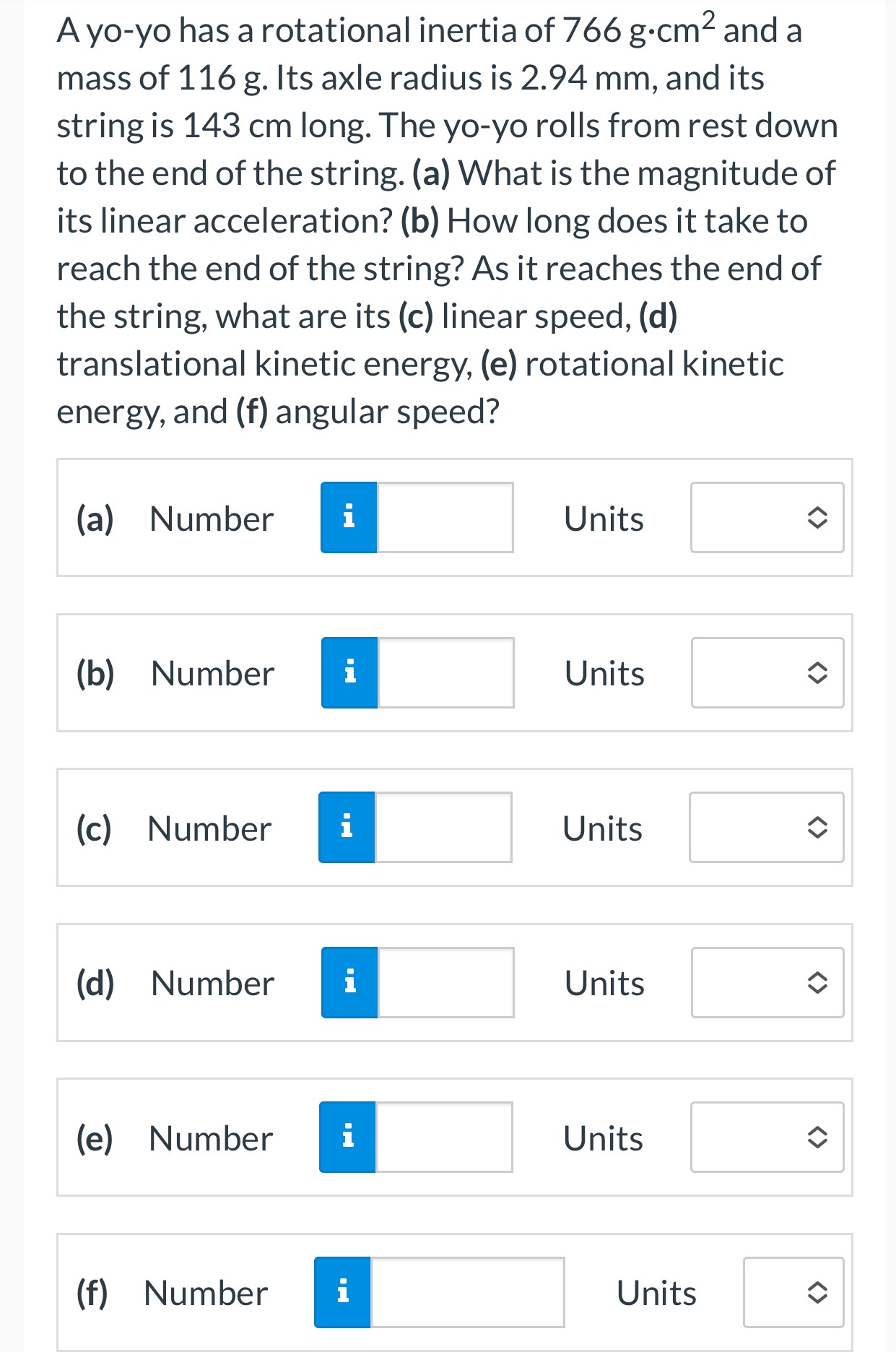A yo-yo has a rotational inertia of 766 g⋅cm2 and a mass of 116 g. Its axle radius is 2.94 mm, and its string is 143 cm long. The yo-yo rolls from rest down to the end of the string. (a) What is the magnitude of its linear acceleration? (b) How long does it take to reach the end of the string? As it reaches the end of the string, what are its (c) linear speed, (d) translational kinetic energy, (e) rotational kinetic energy, and (f) angular speed? (a) Number Units (b) Number Units (c) Number Units (d) Number Units (e) Number Units (f) Number Units
